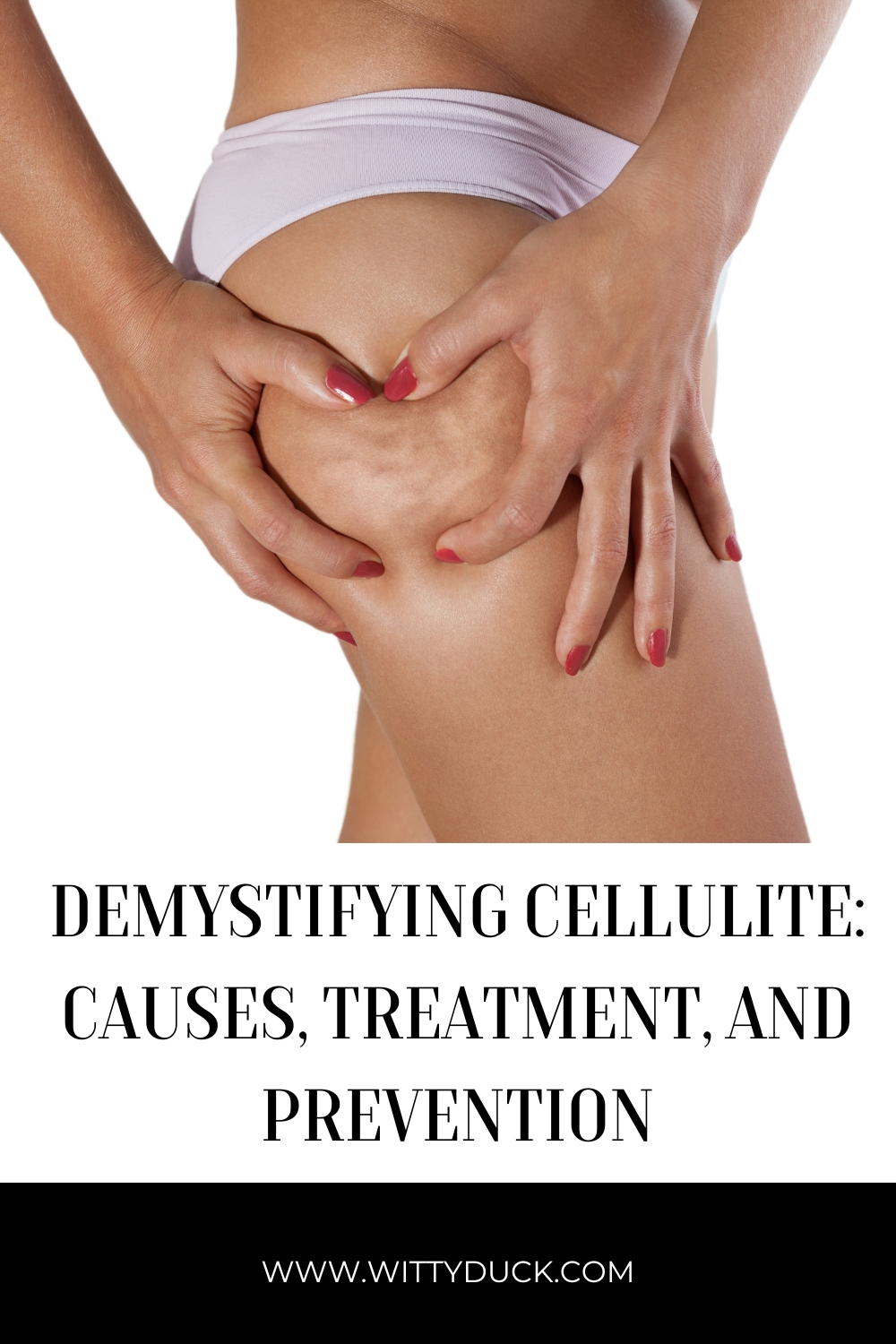Dear ladies, if you’ve ever noticed dimpled, lumpy skin on your thighs, buttocks, or abdomen, you may be dealing with a common skin concern known as cellulite. Cellulite affects women of all ages, body types, and fitness levels, and it’s essential to understand its causes, treatments, and prevention strategies. In this comprehensive blog post, we will delve into the world of “orange-peel skin”, exploring its various aspects to equip you with the knowledge you need to tackle this issue effectively.
What is Cellulite?

Cellulite, also known as “orange-peel skin” or “cottage cheese thighs,” refers to the appearance of dimples and bumps on the skin, mainly affecting the thighs, buttocks, and abdomen. This cosmetic concern is more prevalent in women due to differences in the structure of their connective tissue and fat distribution. While cellulite isn’t a medical condition, it can significantly impact one’s self-esteem and body confidence.
Cellulite on Legs:
Cellulite legs are a common issue that many women face. The dimpling and unevenness can make wearing shorts or swimsuits an anxiety-inducing experience. To address it on the legs, several treatment options can be considered:
- Topical Creams: Some over-the-counter creams claim to reduce their appearance by improving skin elasticity and reducing fluid retention. Look for products with ingredients like retinol, caffeine, and antioxidants.
- Massage Therapy: Regular massages, particularly using techniques like lymphatic drainage massage, can help improve blood circulation and reduce fluid buildup, temporarily smoothing the appearance of cellulite.

- Laser Therapy: Laser treatments, such as radiofrequency and laser-assisted liposuction, can target cellulite by stimulating collagen production and breaking down fat cells.

- Strength Training: Incorporating strength training exercises in your workout routine can help tone the muscles in your legs, potentially reducing the visibility of the “orange-peel skin”.
How to Get Rid of Cellulite:
While it may not be possible to completely eliminate the “orange-peel skin”, there are several measures you can take to minimize its appearance:
- Healthy Diet: Opt for a balanced diet rich in fruits, vegetables, whole grains, and lean proteins. Reducing processed foods, sugary snacks, and excessive salt intake can help manage fluid retention.
- Hydration: Stay well-hydrated by drinking plenty of water throughout the day. Proper hydration can support skin health and elasticity.

- Regular Exercise: Engage in regular physical activity, combining cardiovascular exercises with strength training to improve blood flow and tone muscles.
- Dry Brushing: Dry brushing the affected areas can stimulate circulation and exfoliate the skin, potentially improving its texture.

Facial Cellulite:
Cellulite can also occur on the face, although it’s relatively less common than on the body. Facial cellulite usually appears around the cheeks and eyes, giving a saggy or droopy appearance. Some potential causes of facial cellulite include:
- Aging: As we age, the skin’s elasticity decreases, making it more susceptible to sagging and cellulite formation.
- Genetics: Your genetic makeup can influence the distribution of fat and collagen in your face, affecting the likelihood of facial cellulite.
- Lifestyle Factors: Smoking, excessive sun exposure, and an unhealthy diet can contribute to premature aging and facial cellulite.

Treatment options for facial cellulite are limited compared to body cellulite. However, some individuals may consider dermal fillers or other cosmetic procedures to address the issue.
What Causes Cellulite?
Understanding the factors that contribute to its formation can help you take proactive steps to prevent its progression:
- Hormones: Hormonal changes, particularly estrogen and progesterone fluctuations, play a significant role in cellulite development. These hormones influence fat storage and blood circulation.
- Genetics: Your genes can influence the number and arrangement of fat cells and the structure of your connective tissues, making some individuals more predisposed to “orange-peel skin” than others.
- Lifestyle Habits: Sedentary lifestyle, poor dietary choices, smoking, and excessive alcohol consumption can contribute to its formation.

- Clothing: Wearing tight clothing, particularly around the thighs and buttocks, can restrict blood flow and contribute to its formation.
Cellulite on Stomach and Buttocks:

“Orange-peel skin” on the stomach and buttocks is a common concern for many women. While it may seem challenging to target specific areas for reduction, the following strategies can be beneficial:
- Cardio Exercises: Engage in regular cardiovascular activities, such as running, swimming, or cycling, to burn calories and reduce excess fat.

- Strength Training: Strengthening your core and glute muscles through exercises like squats, lunges, and planks can improve muscle tone and reduce the appearance of the lines.
- Anti-Cellulite Creams: Look for topical creams specifically designed for the stomach and buttocks area, containing ingredients like caffeine and retinol.
Conclusion:
Cellulite is a common cosmetic concern that affects women worldwide. While it may not be entirely preventable, understanding its causes and risk factors can help you take proactive steps to minimize its appearance. Leading a healthy lifestyle, maintaining a balanced diet, staying active, and considering various treatment options can collectively contribute to managing it effectively. Remember, it is entirely normal, and no one should feel ashamed of their body. Embrace your uniqueness and beauty, knowing that every woman is extraordinary in her way.

If you liked this post, check out some of our related posts too!
Tea Tree Oil Benefits For Beautiful and Radiant Skin
Popping Blackheads: Effective Techniques and DIY Removal Masks
DIY Lip Scrub: Homemade Recipes for Luscious Lips



